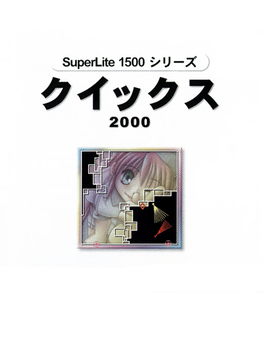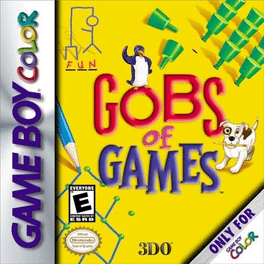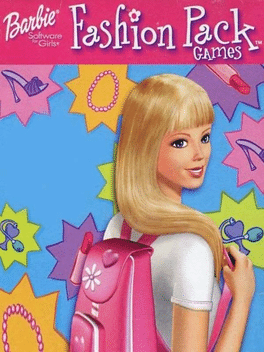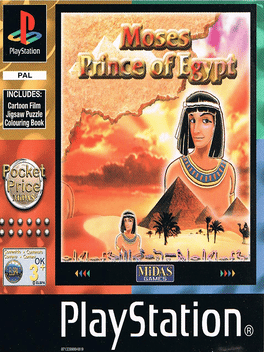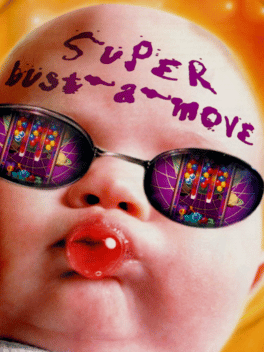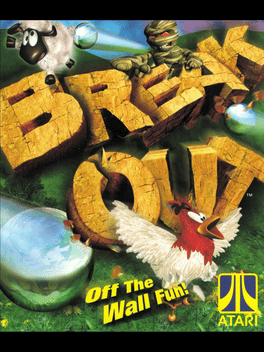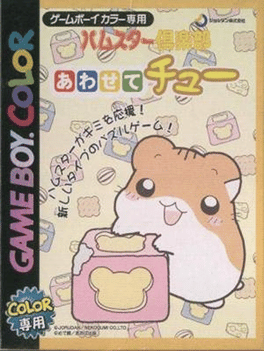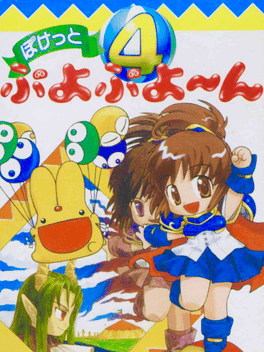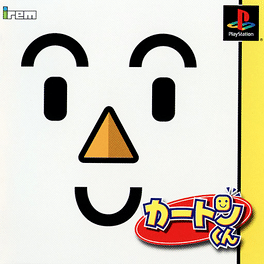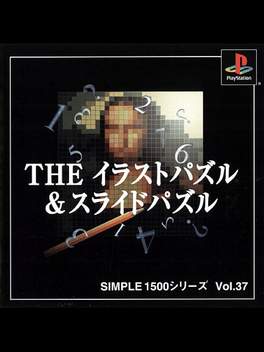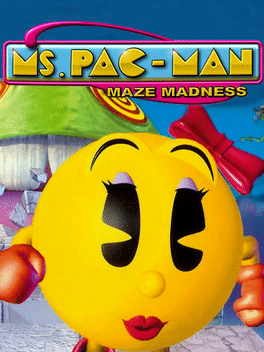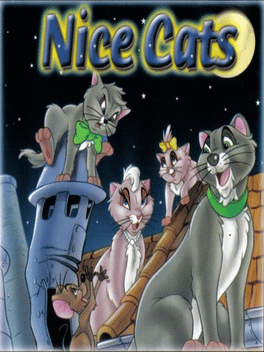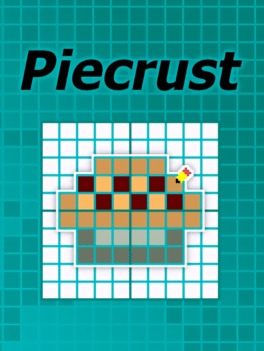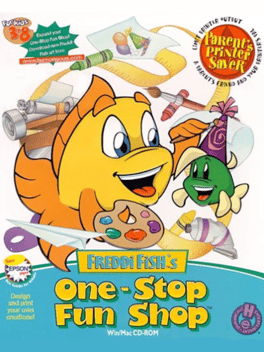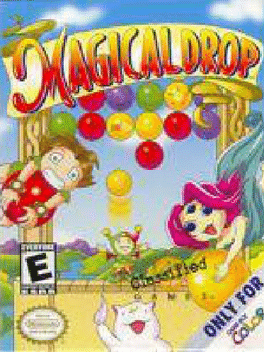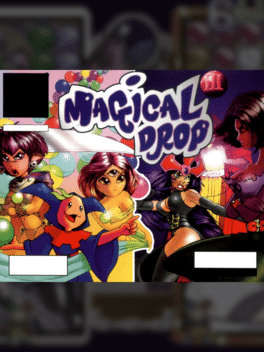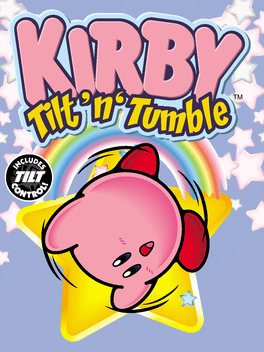New Ps3 Games - Page 262
-
SuperLite 1500 Series: Qix 2000
2000
Qix 2000 offers both a perfectly-translated version of the original and the insanely fun arrangement version, which updates the graphics (giving the Qix itself a Tempest X3-style psychedelic flair) and adds a few power-ups to the mix. The speed-up power-up makes even slow draw fast, and fast draw faster, but the speed-down power-up negates that effect - and heaven help you if you hit the latter while already operating at normal speed. -
Gobs of Games
2000
Gobs of Games
2000
GOBS OF GAMES brings many childhood games to the Game Boy Color. The 16 different games are broken into four categories: Paper games, Peg games, Puzzle games, and Board games. The Paper games include Hangman, Dot Boxes, Triangle Boxes, Share, Color Snakes, and Tic-Tac-Toe. Peg Game is a series of boards in which the goal is to remove all of the pegs by jumping over them. Scramble and Move It are Puzzle games, and the only Board game is Checkers. All of the games can be played solo, but some can also played against another person via a link cable. Try to relive your younger days with GOBS OF GAMES. -
Barbie: Fashion Pack Games
2000
Discover a world of fashion fun with Barbie! Play the exciting games inside her virtual pink Back Pack! Activities & puzzles feature fashion items like jewelry, clothes & shoes! Complete each level to win special fashion accessories to dress up Barbie & her friends! -
Moses Prince of Egypt
2000
Found by the river, and adopted into the royal family of Egypt, Moses must start on a quest to save his true people, the Israelites, from misery at the hands of their cruel Pharaoh. As well as a great half-hour cartoon video, Moses: Prince of Egypt features an easy-to-use virtual colouring book and a challenging puzzle game. Can the prince of Egypt fulfil his destiny? -
Crossroad Crisis
2000
Crossroad Crisis
2000
star 6.9A budget release from Agetec, this puzzler (also known to some as Tic Tac Chicken) challenges gamers to create a safe path for a lost baby chick so he can return home. Slide and spin the tile pieces to form his walkway, but you're going to have to think quick -- the tiles are floating on water and the little guy isn't a good swimmer! -
Super Bust-A-Move
2000
Super Bust-A-Move
2000
Super Bust-A-Move introduces some new elements to the series (and removes some others): Large bubbles are found in certain levels. Shooting a bubble of the same color at them makes every bubble in the level change into that color. In some levels, the pointer and the bubbles that are shot are of a very small size, enabling the player to shoot bubbles between small gaps. These bubbles grow into normal size after being clustered. Occasionally, a conveyor belt will surround the level. This makes bouncing off the ceiling and the walls significantly tricky, since the bubbles' trajectory will change upon bouncing. Levels do not always have the usual rectangular shape. Some of them are jagged or have walls inside them, which forces the player to change strategy. Small blocks appear in some levels. They change the bubbles' trajectories, much like walls, but they move down with the level and fall off when they touch the line. The pulley system introduced in Puzzle Bobble 4 is nowhere to be seen. Chain Reaction is only prese -
Breakout
2000
Breakout
2000
An updated remake of the 1976 Arcade classic of the same name, Breakout for the PlayStation dispenses with the simplistic lines and dots of the original game and adds power-ups, 3D interactive worlds, multiple levels (that must be unlocked) and, of course, a storyline. Only the basic objective remains the same: maneuvering a paddle to keep a ball in play so it can ricochet off a wall of bricks (or other items in this case), effectively eliminating the bricks from the playfield. -
Hamster Club: Awasete Chu
2000
A puzzle game. Work with the cute hamsters to get rid of the falling blocks. There are two modes: "single mode" where you can see the ending according to the score when you select a support character and increase the score, and "2P battle mode" where you lose if the blocks are piled up first. The first privilege is an original key chain gift. -
Pocket Puyo Puyo~n
2000
Pocket Puyo Puyo~n
2000
Pocket Puyo Puyo~n is a simplified version of Puyo Puyo~n for the Game Boy Color, released in Japan in 2000. At the time of release, Sega owned the Puyo Puyo license and are credited in game, however development and publishing was still largely handled by Compile. -
Carton-Kun
2000
Carton-Kun
2000
Carton-kun is a puzzle game that features a kind of Carton family that compete in different puzzle modes. The game features 3 game modes and 6 different character at the beginning (each of them with his own special attack) and other hidden characters that will be unlocked solving other parts of the game. -
Simple 1500 Series Vol. 37: The Illust Puzzle & Slide Puzzle
2000
Big collection of illustration and slide puzzles for the player to choose and solve. Up to 2 players to play at the same time. There are more than 500 illustration puzzles and more than 100 slide puzzles. -
Ms. Pac-Man: Maze Madness
2000
star 8.3Professor Pac learns that the witch, Mesmerelda, has seized control of the Enchanted Castle using black magic and from there is planning on stealing all four Gems of Virtue (Generosity; Truth; Wisdom; Courage) to control the "four wonders" (areas of Pac-Land). He creates a device called a Pactrometer which allows Ms. Pac-Man to go to these areas to recover the gems before Mesmerelda can get them first. -
Nice Cats
2000
Nice Cats
2000
Nice Cats is a budget priced game for children. It has four activities on it's main menu, one of which just adjusts the sound levels. The other three activities are: -
Piecrust
2000
-
Freddi Fish's One Stop Fun Shop
2000
Kids join detective of the deep, Freddi Fish, in an exciting world of self-expression and ongoing discovery. Ideas take shape in front of them as they design their own projects, instilling confidence and inspiring creativity. Kids can design their own layout or customize ready-made templates, use fun tools such as bubble wands and spray paint, and apply them to various projects. Make hats, place mats, party invitations, cards, envelopes, calendars, and more. Personalized coloring pages let kids design onscreen or at the kitchen table. Kids can also pick a character, add a background, and listen as their customized story is read back. -
Magical Drop
2000
Magical Drop
2000
The Game Boy Color Magical Drop is heavily based on Magical Drop III. One notable omission from previous Magical Drop titles is the lack of a Story mode. This leaves the standard Endless mode as the only single-player mode. It is the only Magical Drop game that has never been released in Japan. -
Magical Drop 3
2000
Magical Drop 3
2000
star 5.2Released in Japan as "Magical Drop III + Wonderful" and in Europe simply as "Magical Drop III", this version packages Magical Drop III: Yokubari Tokudaigou! with a console port of Magical Drop Plus 1! The game features a slightly slower gameplay pace than the Japanese version, omits the "Arcade" version and gallery from the Japanese release, and translates the game's script into multiple languages. Unlike previous versions released outside of Japan, this game retains the Japanese voice work; similarly, the port of Magical Drop Plus 1! is based on the Japanese version instead of Chain Reaction. -
Kirby Tilt 'n' Tumble
2000
star 7Peacefully sleeping in his Dream Land, Kirby drifts lazily amongst the beauty of the sky. A beauty that King Dedede cannot abide with. Jealous of the sky's wondrous splendor, King Dedede has acquired a tool that will let him steal the night's stars, plunging the world into eternal drab daylight. When Kirby awoke, he found that it was still daytime. And evermore, it would be daytime, unless Kirby made the journey to find King Dedede and recover the stars to restore the night's sky. So begins the latest Kirby adventure, another action adventure with the morphing marshmallow in a starnge fantasy world. However, the one thing separating this latest adventure is the control scheme. Here, you don't control Kirby directly. Instead, you guide Kirby by tipping your system to roll the little round pink puff through a series of mazes. If you get in a jam you can make Kirby jump by a controller press, and Kirby can still acquire weapons from other enemies, but the real skill is using the tilting to your advantage. -
Mine
2000
-
Tetris with Cardcaptor Sakura: Eternal Heart
2000
Tetris with Cardcaptor Sakura: Eternal Heart was released on August 10, 2000 and was published by Arika for the PlayStation 1.
